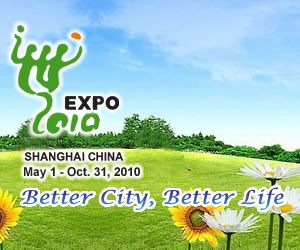Cambodia sheds past and present glory at Expo
|
|
|
As Monday marks National Pavilion Day of the Kingdom of Cambodia at the Shanghai? World Expo, perhaps this is your best opportunity to discover the southeast Asian country without travelling far. [Photo: CRI Online] |
In recent years, Cambodia has been a popular tourist destination. Its mysterious and transcendent cultural heritages are big attractions to expeditioners, archeologists, historians, and even filmmakers.
As Monday marks National Pavilion Day of the Kingdom of Cambodia at the Shanghai World Expo, perhaps this is your best opportunity to discover the southeast Asian country without travelling far.
Cambodian Pavilion Day began with a folk dance performance inspired by field work during harvest season.
With the theme, "Cultural Life in the City," the exhibition hall fully embodies Cambodia's sense of cultural heritage protection with its three historical periods: Angkor, Odong, and Phnom-Penh periods. These three periods witnessed Cambodian development since its establishment to modern day. The pavilion features the country's rich culture, art, historical relics, and abundant natural resources.
Stone-built architecture in the Angkor Period, including the royal monasteries, temples, Buddha statues, roads and bridges are displayed in the pavilion, taking visitors to the ancient eras.
Angkor, which comes from a Sanskrit word meaning "capital" or "city", was the world's largest pre-industrial settlement complex between the 9th and the 15th Century. And Angkor Wat, a Hindu temple complex, was built in the early 12th century.
As the most famous and best-preserved temple at the site, it is the only one to have remained a significant religious center since its foundation - first Hindu, dedicated to the god Vishnu, then Buddhist.
Angkor Wat is on UNESCO's culture heritage list and has become a symbol of Cambodia, appearing on its national flag. It is also the country's prime attraction to visitors.
Also on display are the delicate wood architectures, agricultural facilities, and the early shape of looms. Those installments were all created by the diligent Cambodian people between the 15th and 17th century, that is, the Lovek Period.
Singing and dancing is billed as the namecard of Cambodia. In the pavilion, artists attract visitors with their enthusiasm, telling people from around the world that the nation is developing towards multi-cultural integration and making the cities and people's life more beautiful.
 0
0 



![As Monday marks National Pavilion Day of the Kingdom of Cambodia at the Shanghai World Expo, perhaps this is your best opportunity to discover the southeast Asian country without travelling far. [Photo: CRI Online] As Monday marks National Pavilion Day of the Kingdom of Cambodia at the Shanghai World Expo, perhaps this is your best opportunity to discover the southeast Asian country without travelling far. [Photo: CRI Online]](http://images.china.cn/attachement/jpg/site1007/20100630/000d87ad3cdd0d94f5502c.jpg)




